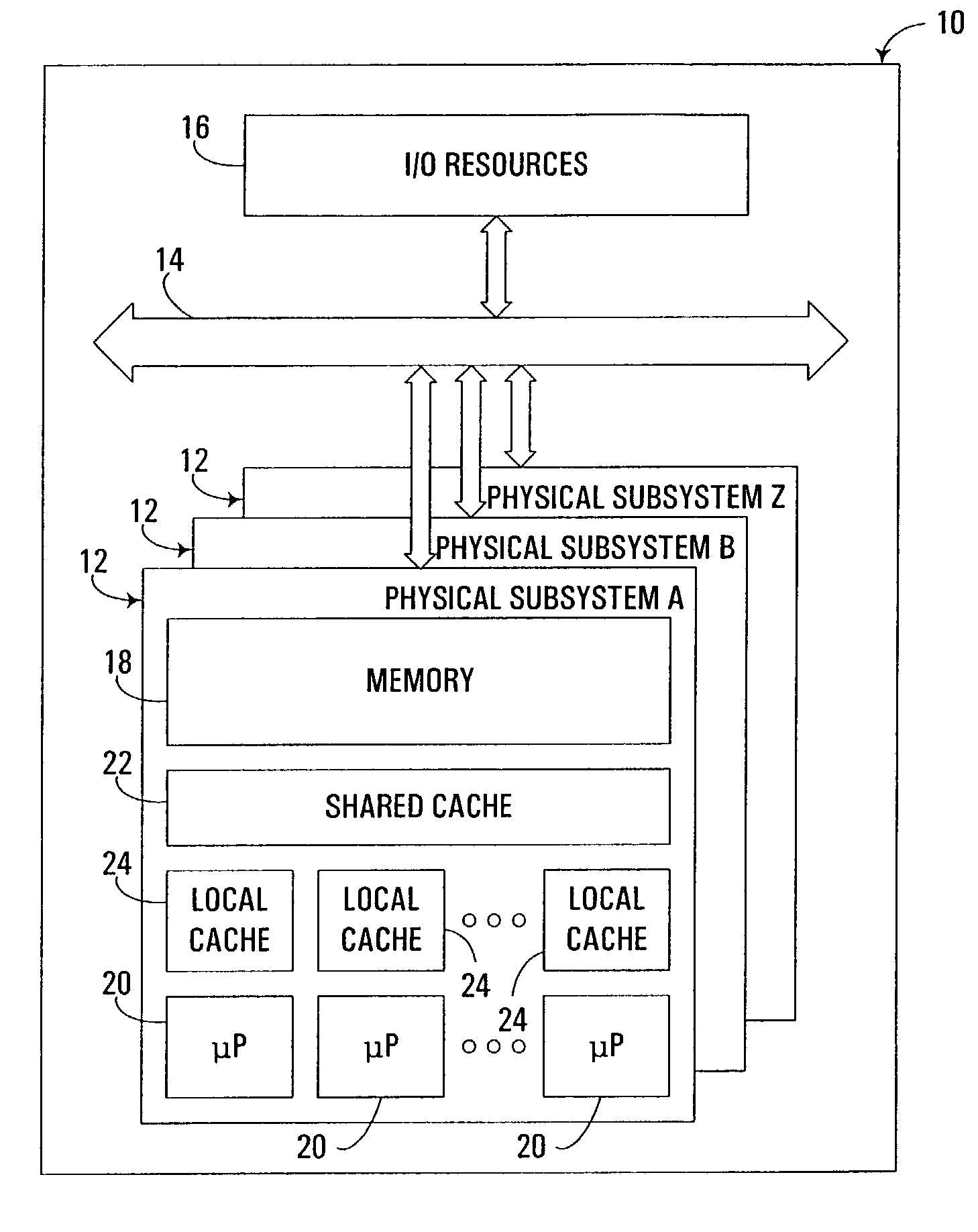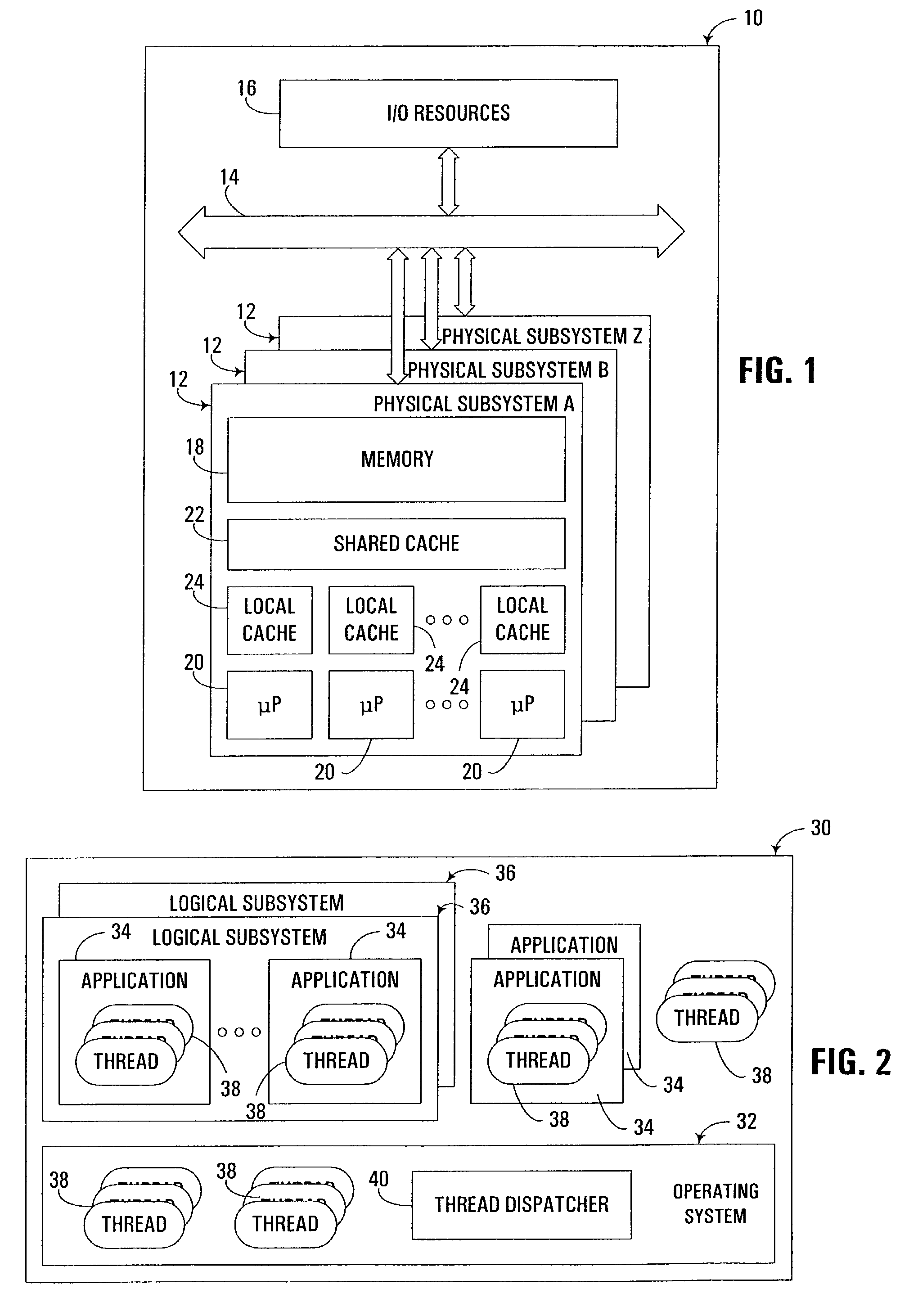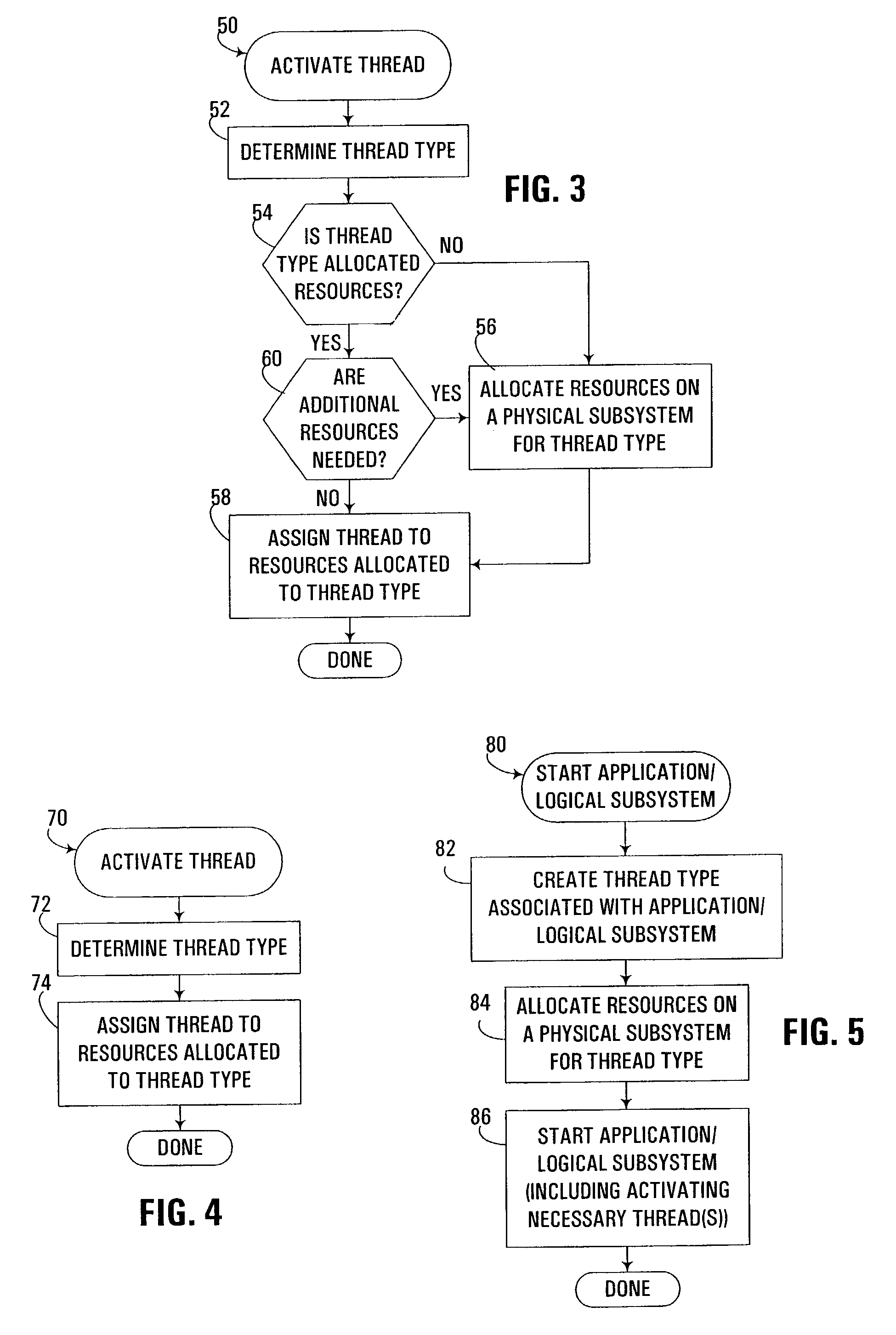Dynamic allocation of computer resources based on thread type
a computer resource and thread type technology, applied in the field of computer software, can solve the problems of communication cost, significant bottleneck of multi-processor computers, and the transfer of data to and from each microprocessor, and achieve the effect of reducing the cost of communication
- Summary
- Abstract
- Description
- Claims
- Application Information
AI Technical Summary
Benefits of technology
Problems solved by technology
Method used
Image
Examples
Embodiment Construction
[0025]The embodiments discussed hereinafter utilize a dynamic resource allocation mechanism that allocates resources to threads in a multithreaded computer of the type including multiple physical subsystems based at least in part on thread type. Consistent with the invention, whenever a particular thread type is associated with a particular set of resources, all subsequent threads that are activated and that match that thread type will be assigned to the same set of resources. Moreover, the sets of resources are typically constrained to individual physical subsystems to minimize cross traffic between multiple physical subsystems in a computer, and thus optimize overall system performance.
[0026]As such, in embodiments consistent with the invention, symmetric assignment of resources typically occurs only when a thread of a unique type is created; otherwise, asymmetric assignment occurs for threads that share the same thread type as other threads for which resources have previously bee...
PUM
 Login to View More
Login to View More Abstract
Description
Claims
Application Information
 Login to View More
Login to View More - R&D
- Intellectual Property
- Life Sciences
- Materials
- Tech Scout
- Unparalleled Data Quality
- Higher Quality Content
- 60% Fewer Hallucinations
Browse by: Latest US Patents, China's latest patents, Technical Efficacy Thesaurus, Application Domain, Technology Topic, Popular Technical Reports.
© 2025 PatSnap. All rights reserved.Legal|Privacy policy|Modern Slavery Act Transparency Statement|Sitemap|About US| Contact US: help@patsnap.com



